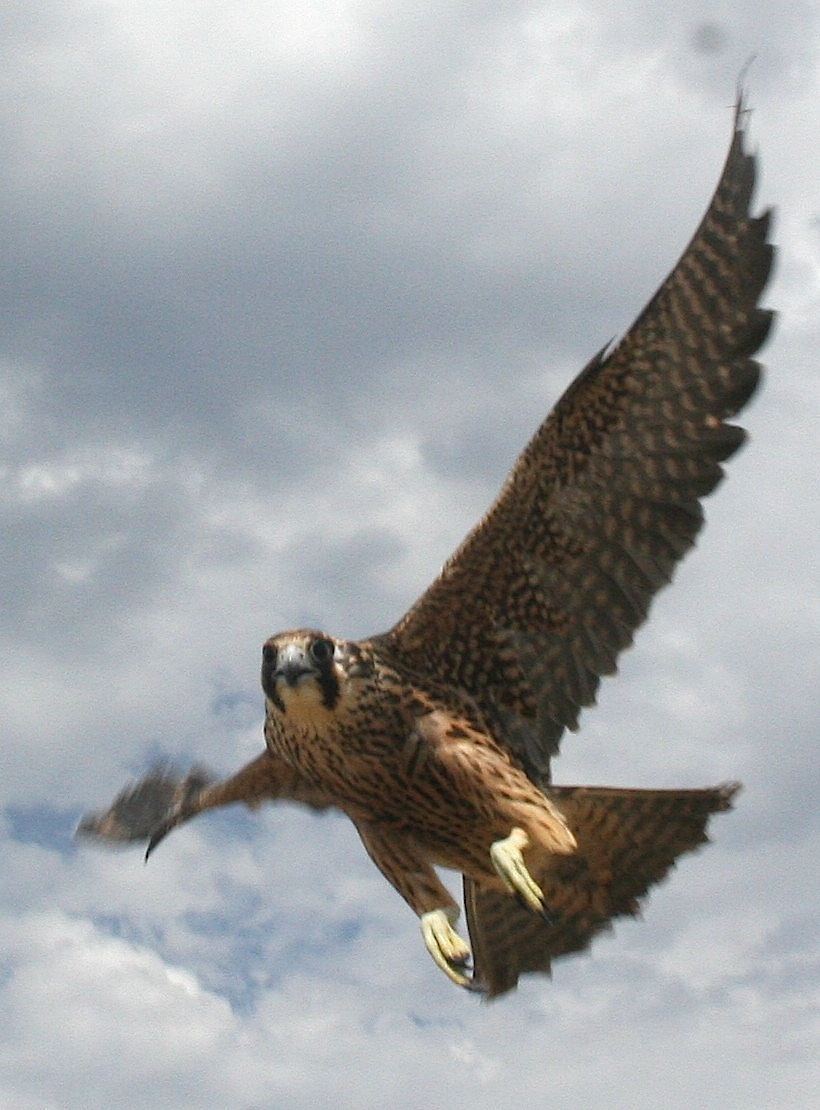Follow Blog via Email
Join 1,565 other subscribersSupport the Peregrine Watch
-
Recent Posts
- Incubation starts… March 23, 2024
- The eggs and I… March 22, 2024
- Scholarship student September 14, 2023
- Scholarship recipients… May 29, 2023
- First flight… May 22, 2023
Archives
Details
Tags
- accident or injury
- artwork
- Bob Isenberg
- breeding
- brooding
- California
- California Polytechnic State University
- chicks
- Cleve Nash
- courtship
- Doris
- eagles
- education
- eggs
- falcon
- feeding
- gulls
- Heather O'Connor
- hunting
- incubation
- invaders
- juvenile
- mammals
- migration
- Morro Bay
- Morro Bay Winter Bird Festival
- Morro Rock
- other birds
- owl
- peregrines
- photography
- Piedras Blancas Lighthouse
- prey
- scholarship
- Shell Beach
- shorebird
- solstice
- stoop
- summer
- survival
- visitor
- vultures
- weather
- whales
- winter
Join us on Facebook
Daily Archives: August 25, 2012
Peregrine on the wing…

Article and photo by Neil Farrell, Tolosa Press
The article in the following post is what locals read when the Bay News was delivered about town. The people attending the release of the juvenile were Jeri Roberts, skilled rehabilitator of falcons, Brian Roberts, her husband, Bob Isenberg, of Pacific Coast Peregrine Watch, Joyce Cory, birdwatching blogger, Neill Farrell, writer, Jeremiah and Jason of the Harbor Patrrol and me. How fortunate we were to see this exciting event. ~Heather
Posted in falcon, juvenile, Morro Rock
Tagged accident or injury, falcon, juvenile, Morro Rock, peregrines, survival
Leave a comment
Peregrine Saved and Released in Morro Bay…

Article and photo by Neil Farrell, Tolosa Press
A juvenile female peregrine falcon is flying once again over Morro Bay Harbor after being rescued, rehabbed and released by Pacific Wildlife Care.
On Saturday, Jeri Roberts of PWC, along with peregrine researchers and friends, hitched a ride with the harbor patrol to the Sandspit at Sandal’s Cove to release the bird back into the wild. There she will possibly rejoin three siblings, part of a brood that hatched and fledged off Morro Rock this season.
The birds were hatched around Easter and flew their nest high up on the southwest side of the Rock on May 22, said Bob Isenberg, of the group Pacific Coast Peregrine Watch (see: pacificcoastperegrinewatch.org) . This bird was found June 26 with a broken wing, wallowing in the water off the Sandspit. She was going to die, but someone gathered the bird up and set in motion its salvation.
PWC took the bird in at its triage center on the power plant property. Roberts said it was examined by a veterinarian, who diagnosed the wing break. “He prescribed the human equivalent of bed rest,” said Roberts.
So the bird was confined in a crate to allow the wing to heal itself. That presents a problem for a critter that can fly 200 mph and is the fastest animal on earth.
“They can ‘de-condition’ rapidly,” explained Roberts, so the plan was to get the bird moving around again as quickly as possible.
“Peregrines are high strung,” she said, “and the triage center has a lot of activity, a lot of noise.” So the bird was transferred to Roberts’ home in Prefumo Canyon. There she has graduated sizes of flight cages, from 6-foot, to 12’, then a 15’ X 10’ and eventually into a 30-foot flight cage.
Though she has another peregrine that along with a Merlin, are used for PWC’s educational programs, they don’t take to company very well.
“You can’t mix two peregrines together,” she said, “they will kill each other.” Playing nice also apparently doesn’t apply for the parent birds either, that’s why they had to release this one on the Sandspit instead of at Morro Rock. Its parents would likely drive her off and Roberts said they would probably have to rescue it again.
In the big flight cage, Roberts said the falcon shared time with an owl also being rehabbed. “They traded off,” she explained. “We had this whole diurnal and nocturnal thing going. I’d take the peregrine out in daylight and the owl would come out at night. We try to get the birds back out into the wild as soon as possible.”
It took about eight weeks to finally release the falcon, which isn’t cheap for an all-volunteer non-profit organization. The falcon ate two 5-week old quail a day, costing more than $5 a day.
“We did right by the bird,” said Roberts. “It’s an expensive undertaking, with x-rays, vet visits, the good diet and feather supplements. She was still growing feathers. It’s turned out very well.”
Once nearing extinction due primarily to habitat loss and poisoning with DDT. The peregrine falcons have made a remarkable comeback since the population hit rock bottom in the 1980s.
Now the four young falcons will have to carve out a niche for themselves but not necessarily here. Falcons are known for traveling far from home to settle down.
For instance, birds that have been tagged locally have shown up in the Channel Islands, Los Angeles and even San Diego.
Isenberg said peregrines have been documented nesting up and down the Central Coast spaced out about every 8-10 miles. Locally there are pairs in Montaña de Oro, Morro Rock, Hollister Peak, Avila Beach, Pismo and on down.
According to Wikipedia, peregrine falcons are the second most widely spread species of bird in the world. About the only place they are not found is Antarctica and above the Arctic Circle.
The birds have adapted to urban living too, nesting on tall buildings and even cathedrals in many large cities. Oddly enough, in the cities, a falcon’s main prey is pigeon, which Wikipedia said is the most widely spread species. On the Sandspit, the falcons have apparently been snacking on snowy plovers.
Posted in falcon, juvenile, Morro Rock
Tagged accident or injury, falcon, juvenile, Morro Rock, peregrines, survival
Leave a comment

